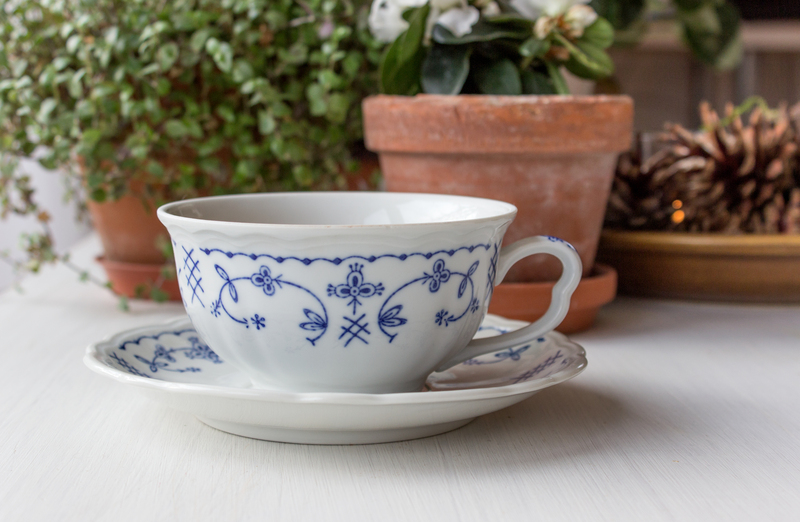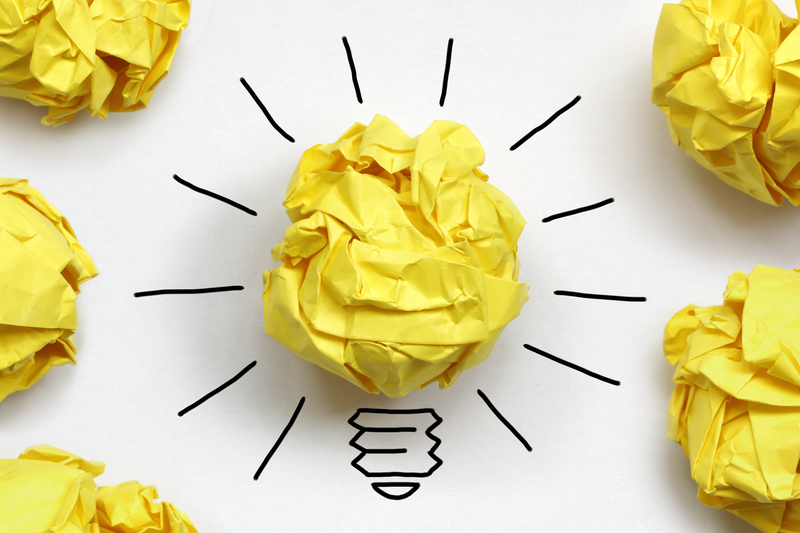Transforming the Ordinary to Extraordinary: Your Upcycling Adventure
Upcycling has rapidly evolved from a trendy buzzword to an inspiring lifestyle choice for millions across the globe. In this comprehensive guide, we'll take you through everything you need to know about transforming the ordinary into the extraordinary through creative upcycling adventures. Whether you're eco-conscious, budget-savvy, or passionate about unique home decor, you'll discover actionable steps, tips, and project ideas to spark your journey.

What is Upcycling?
At its core, upcycling involves repurposing discarded or unwanted materials into something valuable, beautiful, or useful. Unlike recycling--which often breaks down materials for reuse--upcycling focuses on unleashing creativity and craftsmanship, adding value without excessive processing.
- Reduces environmental impact by decreasing landfill waste
- Saves money by reusing items rather than buying new
- Adds uniqueness and personality to your possessions and surroundings
Upcycling vs. Recycling: What's the Difference?
While the terms are sometimes used interchangeably, recycling transforms materials (like paper, plastic, or glass) into raw components for new products. Upcycling, however, gives new life to objects as they are, often enhancing their form and function in the process.
Why Choose Upcycling? The Benefits of Transforming the Ordinary
Upcycling is more than just a hobby--it's a sustainable movement. Here are several reasons to jumpstart your own upcycling adventure:
- Environmental Stewardship: Every upcycled item means one less item in the landfill.
- Creativity Boost: It challenges you to reimagine the potential of everyday things.
- Personal Value: Items crafted by you hold sentimental value and are often conversation starters.
- Budget-Friendly: Get high-end looks without the hefty price tags by transforming cheap or free items.
How to Start Your Upcycling Journey
Ready to turn the ordinary into the extraordinary? Here's how you can begin:
- Look Around Your Home: The first step is to identify items you no longer use. Old furniture, glass jars, worn-out clothes, and even broken electronics can all be upcycled.
- Get Inspired: Browse social media platforms, watch tutorials, and visit upcycling blogs for inspiration. Pinterest and Instagram are treasure troves for upcycled project ideas.
- Gather Supplies: Upcycling doesn't always require expensive materials. Often, some paint, glue, tools, and basic hardware are all you need.
- Start Small: Begin with simple projects before working your way up to intricate creations.
- Share Your Creations: Inspire others by sharing before-and-after photos of your work online.
Popular Upcycling Projects for Beginners
Not sure where to start? Try these straightforward projects:
- Wine Cork Bulletin Boards: Glue used wine corks onto a cardboard or wooden panel for a functional and stylish bulletin board.
- Mason Jar Lanterns: Paint or decorate old mason jars, insert tea lights or fairy lights, and use them as unique lanterns.
- Painted Planters: Revamp tin cans or old ceramic pots with paint and patterns for vibrant, eco-friendly planters.
- Pallet Furniture: Convert old wooden pallets into rustic coffee tables, bookshelves, or garden seating.
Transforming the Ordinary: Upcycling Every Room
Your upcycling adventure doesn't have to focus on a single item. There's potential in every room. Here's how to upcycle throughout your home:
The Living Room
- Reupholster worn-out chairs with vibrant fabrics for instant personality.
- Turn old windows into decorative frames for family photos or artwork.
- Repurpose ladders as shelving for books, plants, and curios.
The Kitchen
- Use glass jars as storage containers for dry goods, spices, or utensils.
- Transform broken dishes into mosaic countertops or backsplashes.
- Reimagine wooden crates as stylish produce baskets or storage units.
The Bedroom
- Convert old t-shirts into quilts, pillowcases, or braided rugs.
- Upcycle drawers from unused dressers as under-bed storage boxes.
- Design unique headboards using reclaimed wood or shutters.
The Garden
- Create planters from boots, buckets, or tires.
- Build vertical gardens with old pallets.
- Design garden art from hubcaps, cutlery, or bike wheels.
Turning Trash Into Treasure: Upcycling Materials and Techniques
A huge part of transforming the ordinary into the extraordinary involves seeing potential in the items most people throw away. Here are some popular upcycling materials with examples of what you can do with them:
Common Upcycling Materials
- Wood: Pallets, crates, old furniture, doors, shutters
- Metal: Tin cans, wire, old tools, bicycle parts
- Glass: Jars, bottles, windows
- Textiles: Clothes, linen, blankets, towels
- Plastic: Bottles, containers, packaging
- Paper/Cardboard: Newspaper, magazines, boxes
Essential Upcycling Techniques
- Sanding & Painting: Revive almost any surface with sanding and a fresh coat of paint.
- Cutting & Drilling: Hand or power tools let you alter the structure of objects for creative purposes.
- Decoupage: Add visual interest with paper cutouts or fabric glued onto surfaces.
- Sewing & Stitching: Transform textiles by sewing pieces together or adding embellishments.
- Gluing & Assembling: Use strong adhesives to bond materials for unique builds.
- Mosaic: Arrange small pieces of tile, glass, or pottery into artistic patterns.
Upcycling Adventure: Tips for Success
Like any creative endeavor, your upcycling adventure will be as rewarding as the energy you put into it. Take your projects from ordinary to extraordinary with these proven tips:
- Plan Ahead: Sketch your vision or create a mood board before starting a project.
- Take Precautions: Always use safety gear when working with tools, paints, or chemicals.
- Experiment: Don't be afraid to try new styles, colors, or materials.
- Quality Over Quantity: Focus on making each piece well--one standout item can transform a whole room.
- Learn New Skills: Online tutorials, workshops, and community classes are great resources.
Beyond the Home: Upcycling in Fashion, Art, and Business
Upcycling isn't just for decor. It's making waves in fashion, fine art, and entrepreneurship. Here's how:
Upcycling in Fashion
- Clothing Brands: Many designers now create entire lines from surplus or vintage fabrics. Turning old into gold has never been so chic.
- DIY Fashion: Refresh your wardrobe by customizing jeans, jackets, or shoes with patches, embroidery, or paint.
- Accessories: Make jewelry from beads, buttons, silverware, or even computer parts.
Upcycled Art
Artists worldwide are using discarded items as their canvas. Sculptures, wall art, and installations crafted from trash raise awareness about waste while boldly redefining beauty.
Entrepreneurial Upcycling
- Online Shops: Platforms like Etsy are full of upcycled goods. Handcrafted, one-of-a-kind pieces attract eco-conscious shoppers.
- Community Events: Hold upcycling workshops, swap meets, or art fairs to foster local creativity and sustainability.
Common Questions About Upcycling
Is upcycling expensive?
In most cases, upcycling saves money. You're reusing existing items or low-cost finds, and the materials needed are often minimal.
What should I avoid when upcycling?
Avoid using hazardous materials (like lead-based paints or toxic chemicals) unless you know how to handle them safely. Also, respect historical or valuable antiques--research before modifying.
Can kids join in upcycling?
Absolutely! Upcycling builds creativity and environmental awareness in children. Always supervise activities, especially those involving tools or sharp objects.
How Upcycling Transforms Lives and Communities
The journey of transforming the ordinary to the extraordinary through upcycling ripples out far beyond individual homes:
- Reduces environmental pollution by minimizing waste
- Encourages sustainable consumer choices
- Supports small businesses and local artisans
- Fosters community relationships through shared events and workshops
- Reveals the hidden potential in both objects and people

Where to Find Inspiration for Your Upcycling Adventure
Kick-start your journey from ordinary to extraordinary by exploring a world of inspiration:
- Online Creative Communities: Join Facebook groups, Instagram hashtags (like #upcycle), and Pinterest boards for daily project ideas.
- Local Thrift Stores and Flea Markets: Scan for hidden gems in secondhand shops--often, the most mundane item becomes a future masterpiece.
- DIY & Upcycling Workshops: Many cities have makerspaces or workshops with tools, materials, and guidance.
- Nature: Sometimes, simply walking outdoors can spark ideas for natural or rustic upcycling projects.
Conclusion: Start Your Upcycling Adventure Today!
Transforming the ordinary into the extraordinary doesn't require a huge budget, an art degree, or endless free time. With imagination, resourcefulness, and a bit of effort, you can breathe new life into forgotten items--enriching your home, wardrobe, and even your local community.
Ready to begin your upcycling adventure? Start today--discover the immense joy and satisfaction of turning trash into treasure while leaving a positive mark on the planet. The next masterpiece could be hiding in your garage, attic, or even your recycling bin!